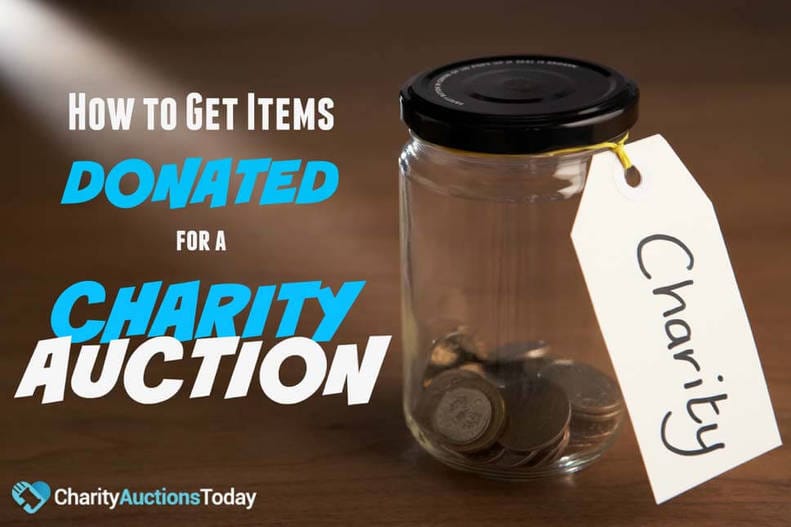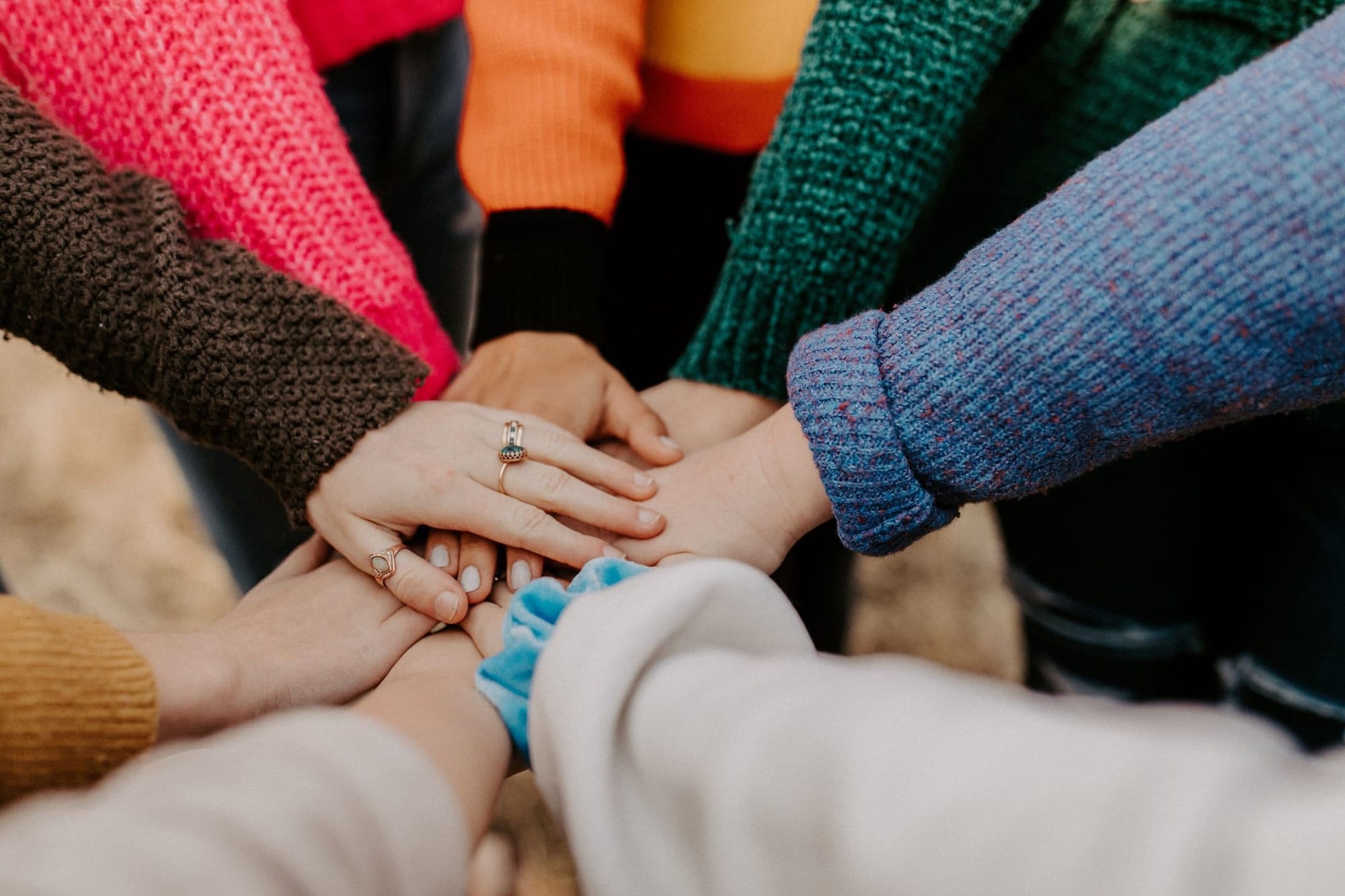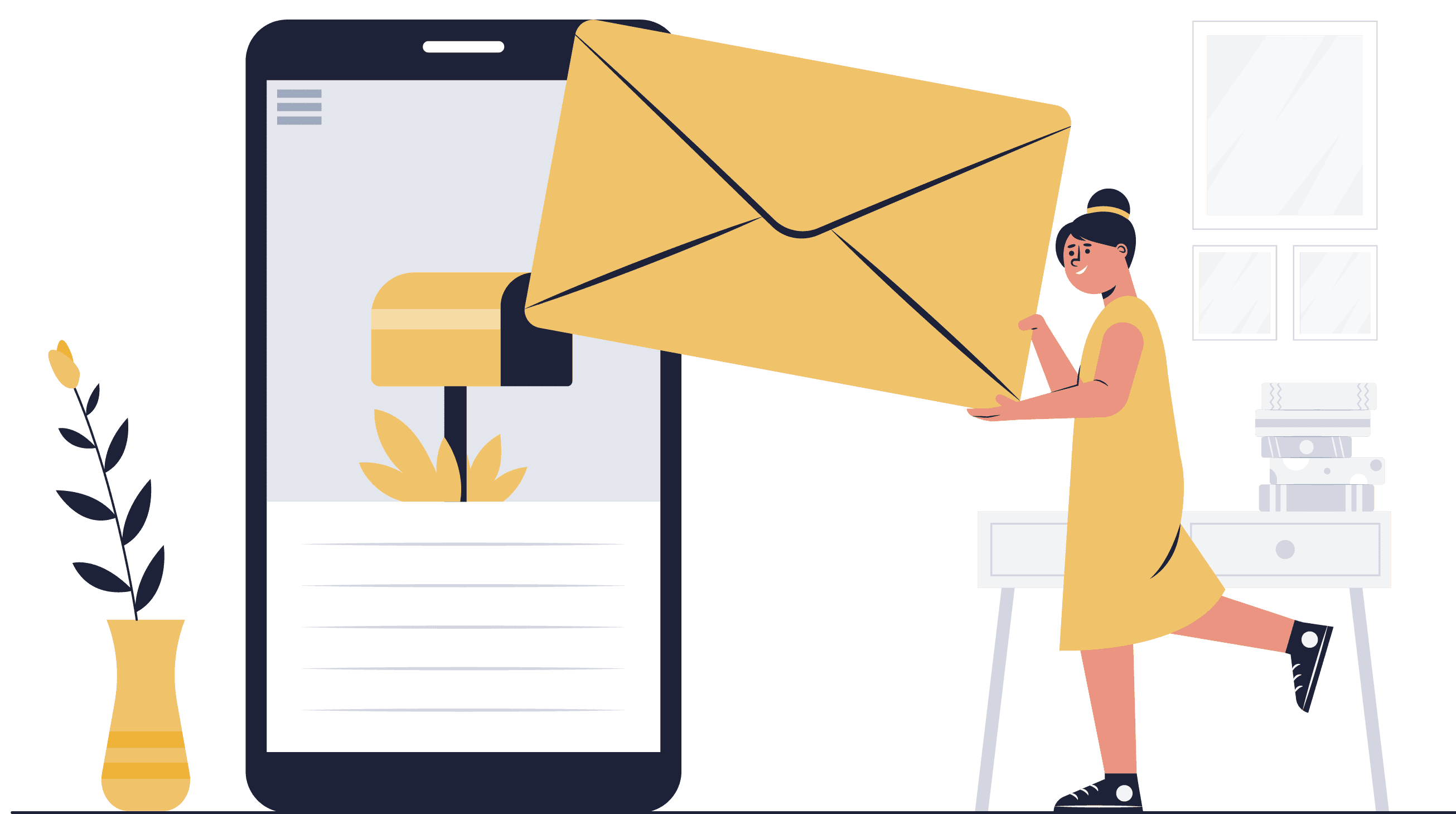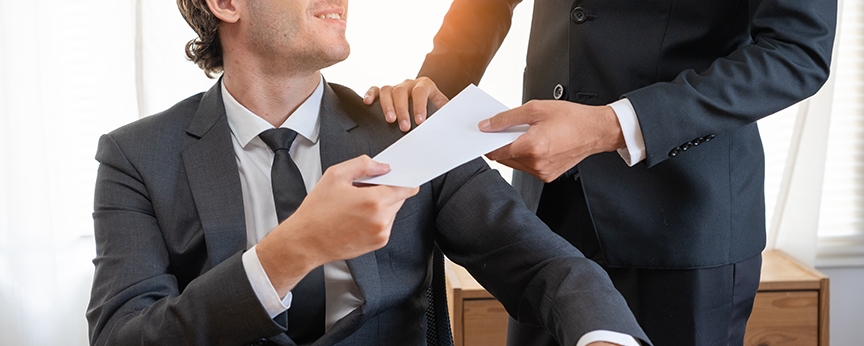
Receiving a check from a donor is the easiest way to reach your fundraising goals. Businesses that have compassion for your cause may decide to donate money instead or in addition to donating services or merchandise. They can write off the donation on their taxes, saving them money while helping a cause dear to their hearts. It's a win-win. Your volunteers who are on the donation team should be familiar with this concept to use when speaking with potential donors.
Another thing to remember about donations—sometimes you'll find that a volunteer thinks they're being pushy when asking for donations. If any of yours feel that way, it's an easy fix: the businesses in your community ARE the community. They're a part of it and are proud to be. They like to support their community, especially for a good cause. There's nothing pushy about asking for donations. You may discover a business owner doesn't want to donate things to auction. That's fine. They may have another cause they're committed to.
You’ve Asked. Now Build the Marketplace
You now know how to secure donated items. Stop storing them — launch your auction so donors, sponsors, and bidders can see, bid, and support your mission in action.
Launch Your Auction & Showcase Donated ItemsHow do you get items and services donated to your charity auction? It's a process, for sure. It begins with the creation of a volunteer committee and assigning roles. There's a lot of brainstorming involved in identifying donors. Once donors are identified, and volunteers have their assigned roles, it's time for marketing—you have a list of potential donors you need to send each a compelling solicitation letter, then follow up with phone calls or in-person visits, and ultimately send thank-you notes. By now, you are probably thinking, "We should have a marketing person on our team..." And you are absolutely correct. A marketing person will make all the difference in your bottom line.
Charity auctions are a great way to raise funds for your nonprofit. And they are so much fun to create. One of the most valuable secrets of a successful charity auction is to have unique auction items to entice and encourage bidding and buying by your guests. Follow our steps below to create a dynamic charity auction team that takes the right steps to meet or exceed your fundraising goals. And have fun.
[ez-toc]
How to Get Items Donated for a Charity Auction
Create a Donations Committee
Recruit volunteers from your organization to help secure meetings with high-profile businesses and organizations, as well as popular stores, restaurants, and services, to ask for donations. Consider forming a donations committee with subcommittees for volunteers with less time to give so they can be assigned specific tasks to complete. It's important to understand how much time each volunteer can provide and assign them roles they can accomplish within those times.
Brainstorm with Your Committee Members
Once you have a group of dedicated volunteers who can help gather donated items for the auction, have a brainstorming session. Important topics that you should tackle include whether you are open to any donation or only items of a particular type, whether you will be auctioning individual goods or packages of different things, and other questions regarding the value of the items to be donated. Your auction may have a theme, so you want to keep donated items relative.
Once you've determined what types of donations you'd like to have in your auction, get to work brainstorming ideas and which businesses can support those ideas. An example might be having a dozen charming "pamper me" gift baskets to donate. For these, you would reach out to stores that sell spa items, fragrant candles, soaps, etc. Once you've gathered all the ingredients, you can create beautiful baskets to sell at your auction.
Pro tip:Gift baskets sell like crazy at auctions. Use the same idea for the "pamper me" basket mentioned above to create other themed gift baskets. For example, try making a gift basket that has a romantic weekend getaway tucked inside, filled with romantic items such as massage oils, candles, chocolates, and romantic music—you get the idea! What other types of baskets can you create? Kids, sports lovers, bicyclists, chefs, bakers, wine enthusiasts, hikers—whatever fits into your location's seasonal hobbies and getaways.

Create a Donor List
One of the best things about having auction volunteers is that most people know others in the community. By others, we mean business owners. Be sure to ask your team if anyone knows any business owners that they can contact.
To create your list of potential donors, consider the owners of local businesses, community members, and anyone whom you think will be willing to contribute a product or service or even offer a cash donation. Make sure the list includes the prospect’s phone number, mailing address, e-mail address, and other means of contact. The address is important because letters and thank you notes will be sent in the future.
Write a Solicitation Letter
Draft a donation letter, otherwise known as a solicitation message. The message should include a brief background of your organization, the organization’s vision and objectives, the reason behind the solicitation, and why you are organizing an auction. You should also put the details of the event and whom to contact in case the recipient has questions. If you have a specific item that you are hoping the business or person will donate, you can include it in the message as well. Ask the head or chairperson of the auction to sign the letter. Most importantly, make sure the donation letter is on your organization's letterhead.
Send Letters
Some teams choose to have their donations volunteers send letters to their potential donors, letting them know that they'll be calling or stopping by to discuss a donation. Business owners like to know the person who is asking for donations so they can put a face to the name. You are more likely to get a donation in person than by sending a letter.
When the letters are ready, either mail them or give them to your potential donor in person. You may also consider emailing the letter to the prospect.
Follow-up with Phone Calls
After the letters are sent, call to see if they have received the letter and set an appointment with them. Or they might just tell you "Yes" on the phone and to stop by to pick up the donation. When asking for things to auction it's best to meet your potential donors where they are. If it's clear they're very busy and prefer one method of communication over another, stick to that. However, if visiting their store or location in person is feasible, it's a great way to create and maintain relationships for years to come.
Send Thank-You Notes
Once you receive items for the auction, promptly send thank-you notes to the donors. And send a final thank-you note when the auction is over to share the success with them, highlighting how you couldn't have done it without them.
If you want to have a great fundraiser auction, you need a great fundraiser auction platform.
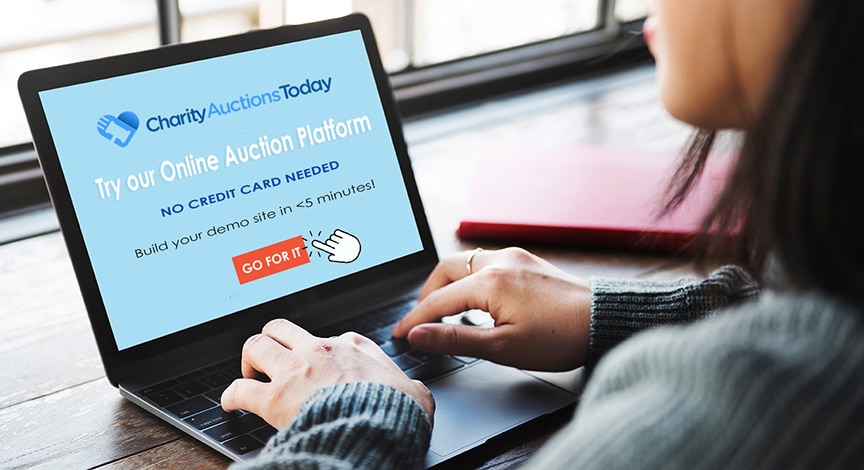
Frequently Asked Questions
What’s the fastest way to start getting items donated for a charity auction?
- Make a top-50 target list of local businesses and experiences.
- Prepare a one-page “why give” sheet + simple donation form.
- Assign ask owners and start with warm relationships first.
Who should we approach first for donated items or experiences?
- Board members’ and volunteers’ workplaces and favorite shops
- Restaurants, salons/spas, fitness studios, family attractions
- Photographers, tutors, coaches, and local artisans
What kinds of donations typically perform best at auctions?
Unique experiences (chef’s dinners, behind-the-scenes tours), gift cards, travel with long redemption windows, wellness/photography packages, and themed baskets curated from multiple donors.
Do you have a simple script for asking a business to donate an item?
“Hi [Name], I’m with [Org]. We’re raising funds for [impact] on [date]. Would you consider donating a [specific item/experience] to our auction? We’ll feature your business in our program and online listing and share results after the event.”
What should our donation request one-pager include? (General information)
- Mission + event date, audience size, and promotion channels
- How donors are recognized and what data they’ll receive
- Deadline, pickup options, and a QR/link to the donation form
General information only.
What belongs on the donation form or certificate? (General information)
- Item description and fair market value (FMV)
- Blackout dates, expiration, booking instructions
- Donor contact, logo permission, and redemption terms
General information, not legal or tax advice.
Is it better to request experiences or physical goods?
Experiences often spark more bidding and have low fulfillment costs. If requesting goods, target premium, giftable items and bundle them into themed packages to raise perceived value.
When should we bundle donations into packages? (General information)
Bundle when single items feel too small or when combining creates a turnkey experience (e.g., “Date Night”: dinner + tickets + parking). Keep themes tight and list all components.
General information only.
How should we recognize item donors to encourage participation? (General information)
- Logo + link on item page and program
- Social shout-outs and on-stage thanks (as appropriate)
- Post-event impact email with results they helped achieve
General information only.
What types of items should we avoid requesting?
Low-demand or bulky items with high shipping costs, highly restricted certificates, and categories that don’t fit your audience. Review last year’s bidding data to steer requests.
How do corporate giving policies affect item requests? (General information)
Many companies have timelines, forms, or limits for in-kind donations. Ask about their process early and provide your EIN and event details. General information only.
How do we set FMV and starting bids for donated items? (General information)
Use realistic retail value for FMV; start bidding around 30–50% of FMV with clear increments. Adjust by category and audience demand. General information, not financial advice.
What’s the best way to handle pickup, shipping, and fulfillment? (General information)
- Prefer digital certificates; clarify pickup windows and location
- State who covers shipping; provide costs upfront when applicable
- Capture winner contact details at checkout and confirm receipt
General information only.
Can we accept alcohol or age-restricted items? (General information)
Some categories require special handling or may be prohibited. Confirm local regulations and venue policies before accepting or listing. General information, not legal advice.
Should we use consignment items to fill gaps? (General information)
Consignment can add high-value experiences without upfront purchase, but check minimums and model expected net. Use sparingly and set reserves when needed. General information, not financial advice.
How do we present donated items so they get more bids? (General information)
- Strong title + 2–3 benefit bullets + crisp photo
- FMV, restrictions, expiration, and blackout dates clearly shown
- Include donor logo (if permitted) and “Buy Now” for hot items
General information only.
What’s a practical procurement timeline and follow-up cadence? (General information)
- T-10–12 weeks: send asks; log responses.
- T-6–8 weeks: follow up; secure certificates; photograph items.
- T-3–4 weeks: finalize listings; confirm pickup/fulfillment.
Follow up 5–7 days after the first ask, then once more by phone. General information only.
How do we thank donors so they give again next year? (General information)
Send a personalized thank-you with event results and a photo, tag them (if agreed), and invite feedback. Offer early placement for next year’s auction.
General information only.
What should we track to improve procurement each year? (General information)
- Who asked, date asked, outcome, and item details
- Bids per item, sell-through rate, and net per category
- Donor preferences and renewal likelihood
General information, not legal advice.
Can you share a short outreach email we can copy?
Subject: Support [Cause] — Donate an item for our [Date] Auction
Hi [Name],
I’m with [Org]. On [date], we’re hosting a charity auction to fund [impact]. We’d be grateful for a donated [specific item/experience]. We’ll feature your business on our listing and event materials, and we’ll share results afterward. Our deadline is [date]; I’m happy to pick up at your convenience.
Thank you for considering this request!
[Your Name] · [Phone] · [Link/QR to form]
💡 Try this in ChatGPT
- Summarize the article "How to Get Items Donated for a Charity Auction" from https://ghost.charityauctionstoday.com/p/how-to-get-items-donated-for-a-charity-auction/ in 3 bullet points for a board update.
- Turn the article "How to Get Items Donated for a Charity Auction" (https://ghost.charityauctionstoday.com/p/how-to-get-items-donated-for-a-charity-auction/) into a 60-second talking script with one example and one CTA.
- Extract 5 SEO keywords and 3 internal link ideas from "How to Get Items Donated for a Charity Auction": https://ghost.charityauctionstoday.com/p/how-to-get-items-donated-for-a-charity-auction/.
- Create 3 tweet ideas and a LinkedIn post that expand on this How To topic using the article at https://ghost.charityauctionstoday.com/p/how-to-get-items-donated-for-a-charity-auction/.
Tip: Paste the whole prompt (with the URL) so the AI can fetch context.
Tom Kelly
Tom Kelly, TEDx speaker and CEO of CharityAuctions.com, helps nonprofits raise millions through auctions and AI. He hosts The Million Dollar Nonprofit podcast and inspires leaders to live their legacy, not just leave it.
Table of contents
Create Your Auction
Raise 40% more with smart bidding tools
